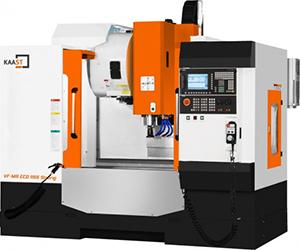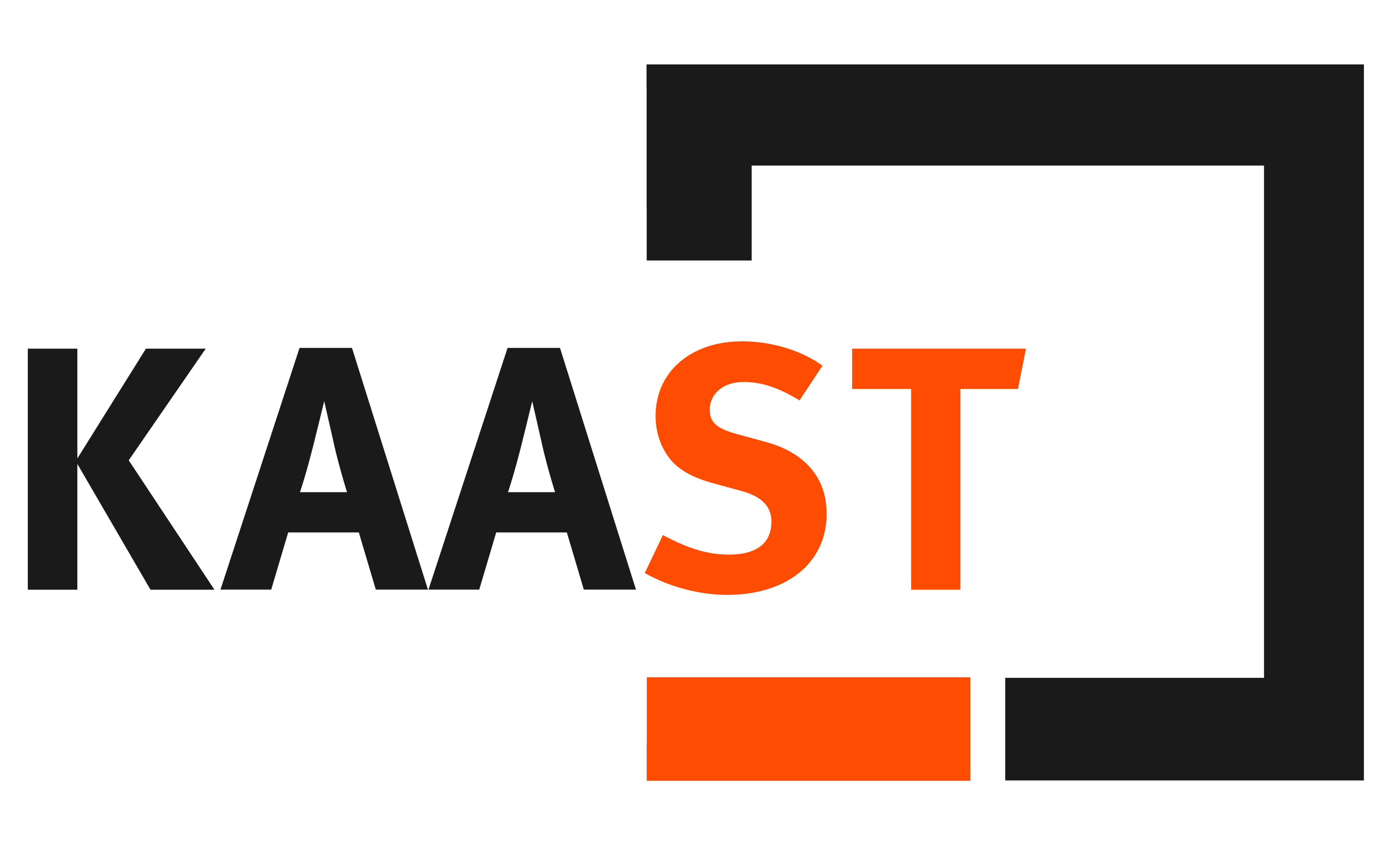
The way a machine is built affects the way it performs. With premium-quality components, high accuracy and attractive price points, the VF-Mill series is setting the standards for how to build vertical machining centers. With machines installed in more than 20 countries, the VF-Mill series has become the go-to machining center for the KAAST family of corporations.
The VF-Series machines offer options for customers to prioritize performance, rigidity and/or speed; with machines that excel at each of these priorities, offering users the ability to receive only what they need for their individual applications. The best known of the VF-Series is the Alpha Center. This 3-Axis (4/5th axis available as an option) machining center features a tempered stress relieved cast-iron frame and class C3 ballscrews for accuracy and durability. All models of the Alpha Center include a fully enclosed splash guard, 24-pocket toolchanger, 10,000-rpm CAT 40 spindle (12,000 and 15,000 rpm available), and an automatic lubrication system.
For training, toolroom workshops, R&D and model making, the VF-Mini offers a 12-position umbrella toolchanger to go with the 10,000-rpm BT40 spindle. Offering 19.7/11.8/15.75” of travel for the X/Y/Z axis and a 25.5"x12” table which can hold up to 440 lbs, the Mini brings plenty of brawn to go with ±0.0004/12” positioning accuracy and ±0.0002” repeatability accuracy.
Running the newest generation of the FANUC Series 0i control systems, the VF-Series machines can receive programming at the machine via manual programming, USB, or CF Card, or ethernet. The Series 0i brings faster, more accurate performance to a wide range of milling, turning, punching and grinding applications with more standard features, more advanced capabilities and faster communications than ever before. FANUC controls have a world-class reputation for performance, precision, reliability and familiar operation, with more than 3.7 million controls installed worldwide. The Series 0i control is the industry’s most reliable system with a mean time between failure rate of 52 years.
Contact Details
Related Glossary Terms
- centers
centers
Cone-shaped pins that support a workpiece by one or two ends during machining. The centers fit into holes drilled in the workpiece ends. Centers that turn with the workpiece are called “live” centers; those that do not are called “dead” centers.
- gang cutting ( milling)
gang cutting ( milling)
Machining with several cutters mounted on a single arbor, generally for simultaneous cutting.
- grinding
grinding
Machining operation in which material is removed from the workpiece by a powered abrasive wheel, stone, belt, paste, sheet, compound, slurry, etc. Takes various forms: surface grinding (creates flat and/or squared surfaces); cylindrical grinding (for external cylindrical and tapered shapes, fillets, undercuts, etc.); centerless grinding; chamfering; thread and form grinding; tool and cutter grinding; offhand grinding; lapping and polishing (grinding with extremely fine grits to create ultrasmooth surfaces); honing; and disc grinding.
- machining center
machining center
CNC machine tool capable of drilling, reaming, tapping, milling and boring. Normally comes with an automatic toolchanger. See automatic toolchanger.
- milling
milling
Machining operation in which metal or other material is removed by applying power to a rotating cutter. In vertical milling, the cutting tool is mounted vertically on the spindle. In horizontal milling, the cutting tool is mounted horizontally, either directly on the spindle or on an arbor. Horizontal milling is further broken down into conventional milling, where the cutter rotates opposite the direction of feed, or “up” into the workpiece; and climb milling, where the cutter rotates in the direction of feed, or “down” into the workpiece. Milling operations include plane or surface milling, endmilling, facemilling, angle milling, form milling and profiling.
- toolchanger
toolchanger
Carriage or drum attached to a machining center that holds tools until needed; when a tool is needed, the toolchanger inserts the tool into the machine spindle. See automatic toolchanger.
- turning
turning
Workpiece is held in a chuck, mounted on a face plate or secured between centers and rotated while a cutting tool, normally a single-point tool, is fed into it along its periphery or across its end or face. Takes the form of straight turning (cutting along the periphery of the workpiece); taper turning (creating a taper); step turning (turning different-size diameters on the same work); chamfering (beveling an edge or shoulder); facing (cutting on an end); turning threads (usually external but can be internal); roughing (high-volume metal removal); and finishing (final light cuts). Performed on lathes, turning centers, chucking machines, automatic screw machines and similar machines.

